Lehrer Architects Create Cheerful Permanent Housing for LA’s Disabled Vets
The idea of housing homeless people in structures the size of sheds is controversial for a number of reasons. In May 2021, Lehrer Architects got a lot of attention when they completed Alexandria Park Tiny Home Village in the North Hollywood neighborhood of Los Angeles, a community of 103 micro-homes capable of housing up to 200 people in 8-foot-wide cabins.
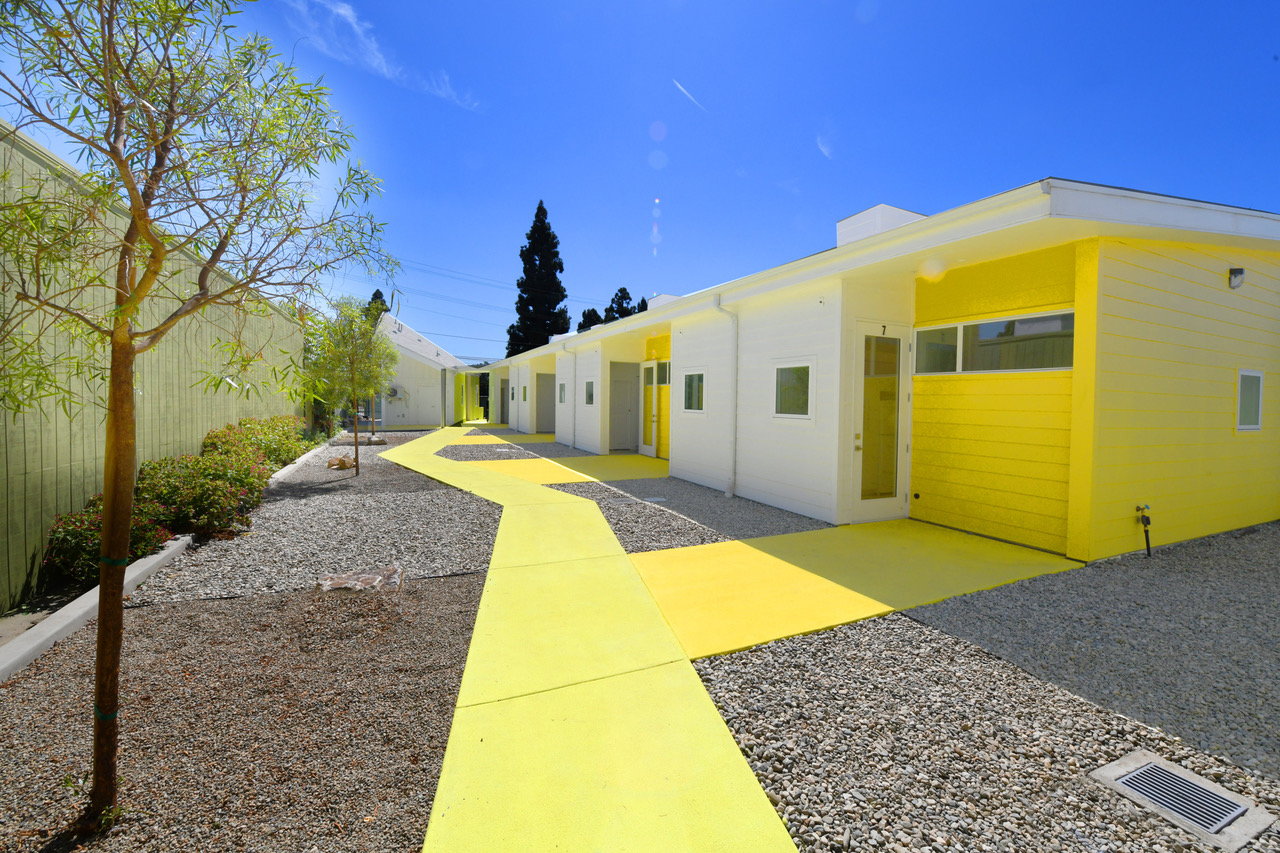
Some find the 64-square-foot size and seeming flimsiness of such tiny houses inhumane, while others believe they’re an important stepping stone to getting people off the street permanently. The architects feel that Alexandria Park Tiny Home Village was always meant to be transitional, giving occupants a sense of security and ownership as well as access to necessary services and facilities until they can move on to more stable housing. They expanded upon that idea in their latest project, creating larger permanent homes for disabled and formerly homeless veterans.
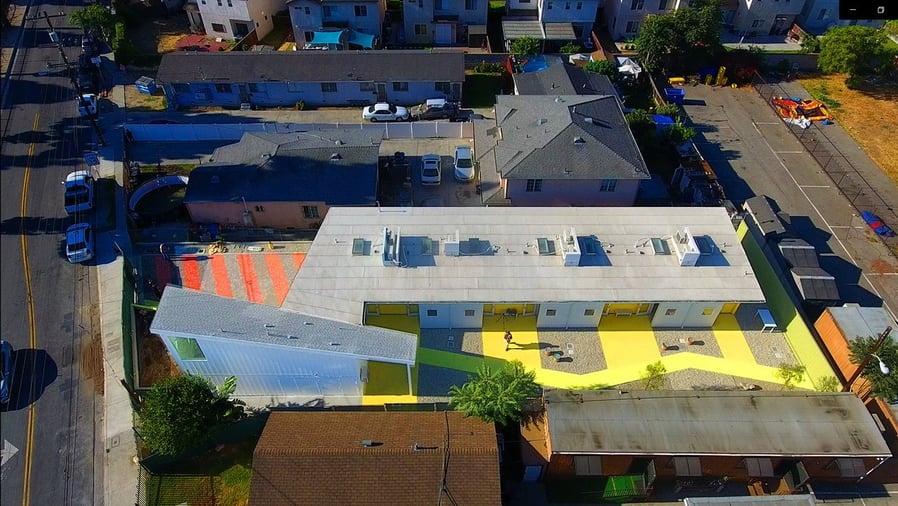
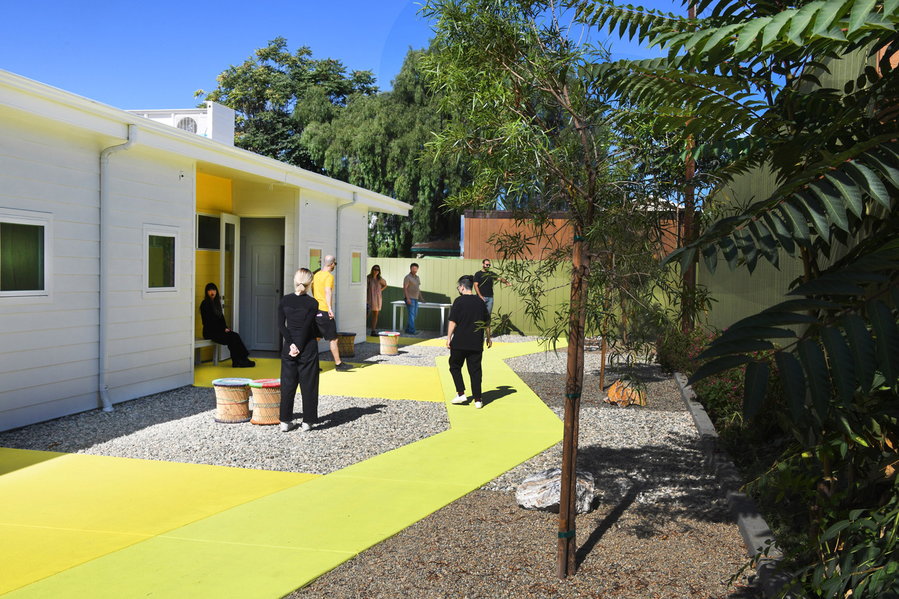
The firm certainly has the experience to back up its ideas. They’ve been creating shelters for vulnerable populations for over 20 years. Six years ago, they partnered with nonprofit developer Restore Neighborhoods Los Angeles and community bank Genesis LA to create a variety of housing prototypes that could help ease the homelessness and housing affordability crises in California. These projects are all rooted in the idea that everyone deserves dignity and a sense of community.
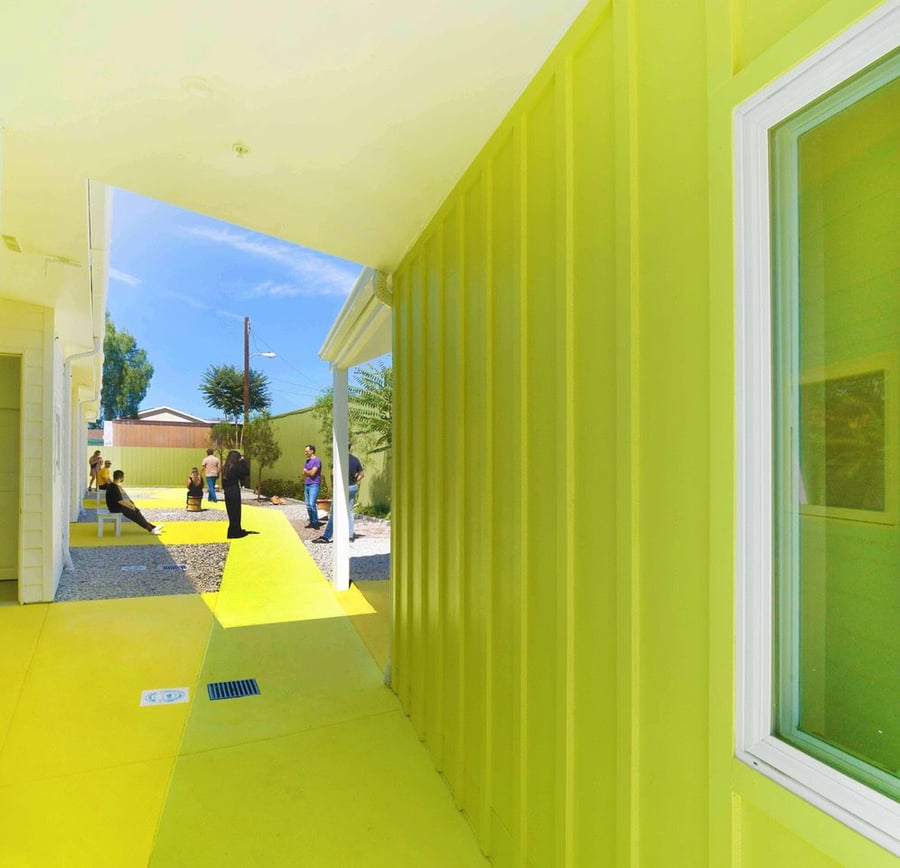
Located in the South Los Angeles community of the same name (just south of Watts and northwest of Compton), Willowbrook Apartments is a seven-unit complex occupying an awkwardly shaped, long-vacant plot of land close to public transit and a community church. Each unit is 300 square feet and includes a private bathroom, kitchenette, and universal design features for accessibility.
Galley-style kitchens and plentiful natural light create a feeling of expansiveness. The units are mirrored back-to-back to save space, and they’re all anchored to a communal outdoor space. A taller structure offers a community meeting room, storage space, and offices to form a “coherent urban campus, even on a small scale.”
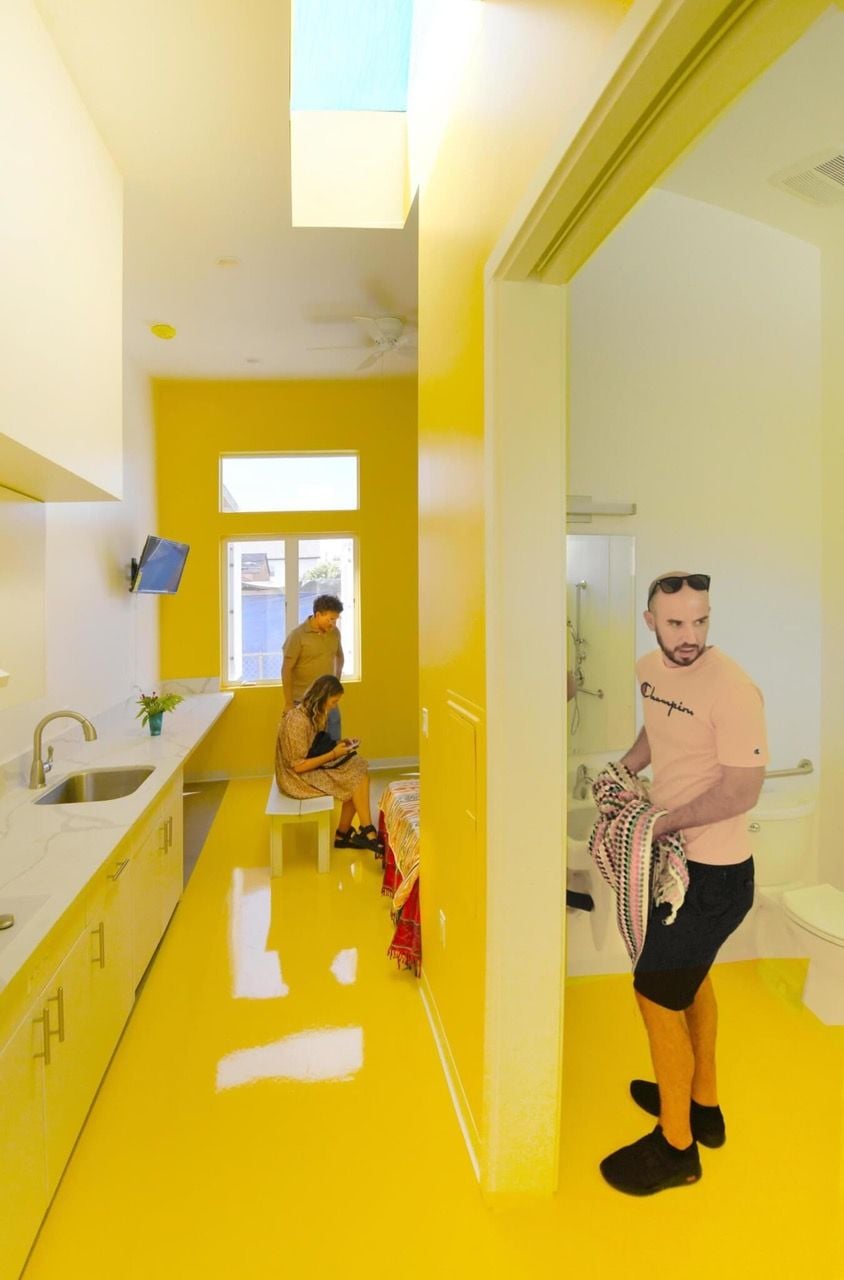
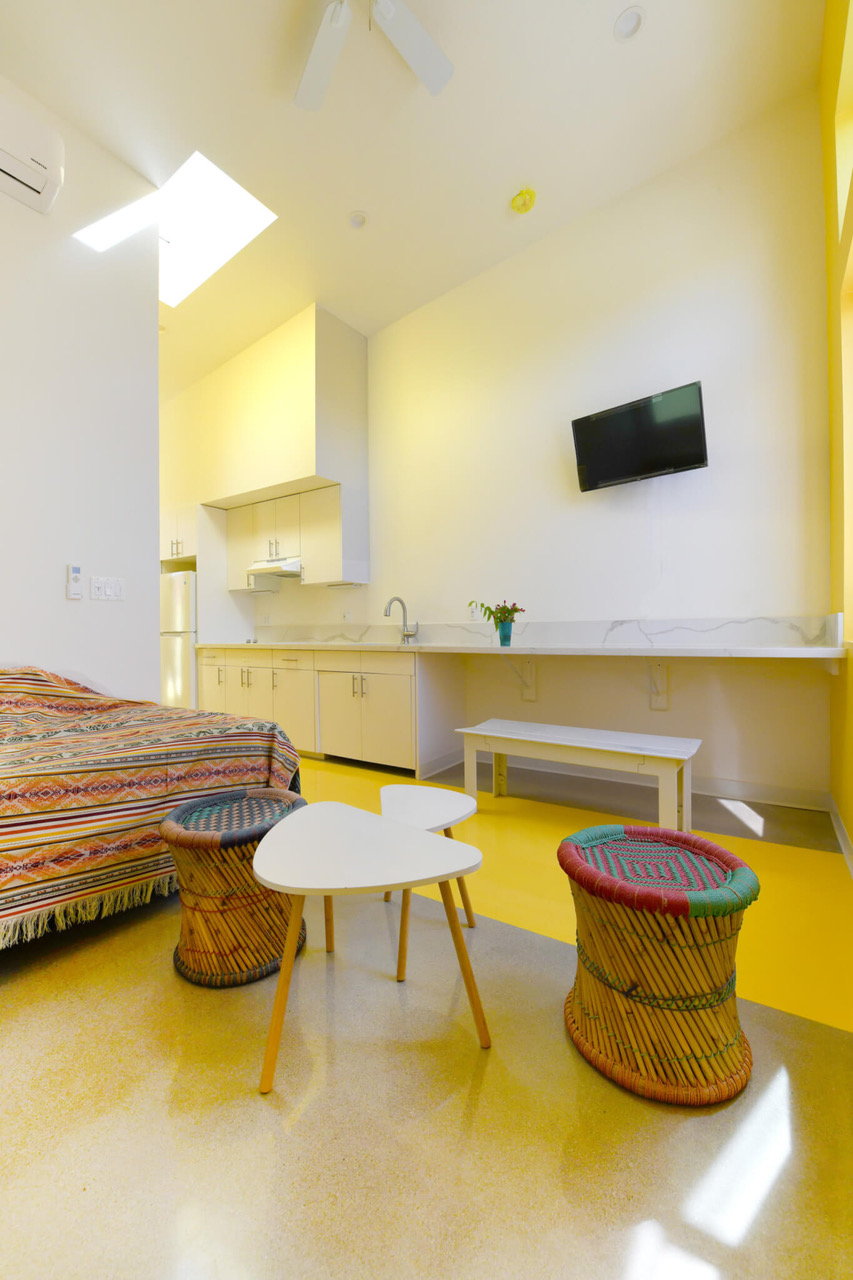
The colors are acid-bright, with neon yellow paths winding around small stone patios and drought-tolerant landscaping. The architects wanted it all to feel very California: cheerful, sunny, and fresh. “Each bend and turn in the path provides real or implied mindful pause from the street to the front door, enhancing the separation from the public realm to the private,” the team explains. “This is something that is meaningful and critical for all residents, but even more so for those that have previously been unhoused.”
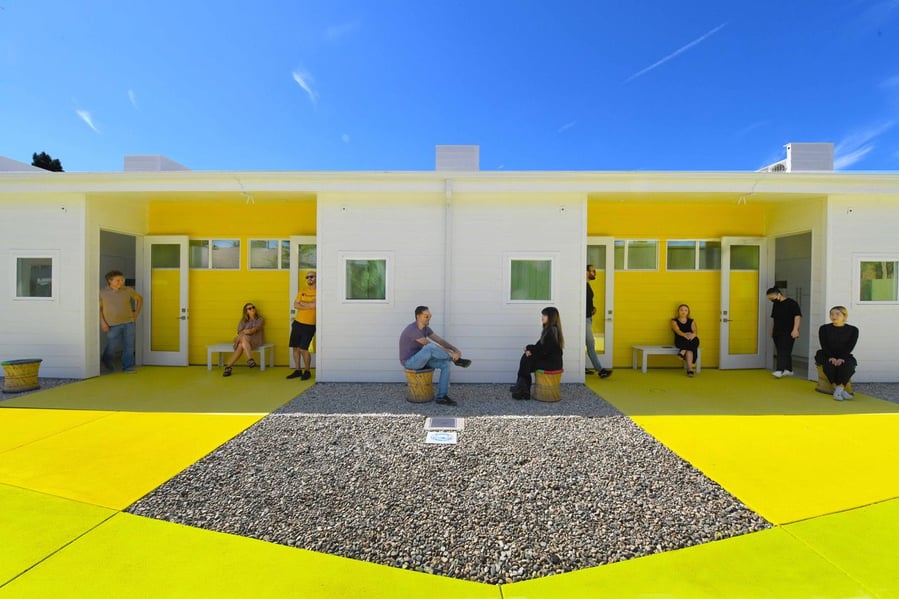
The complex will serve as a model for similar developments. The team chooses urban infill lots that are considered less than ideal by most developers, inserting either individual affordable starter homes costing $200,000, 5-bedroom duplexes for troubled teens, or small communities for vulnerable populations, like Alexandria Park Tiny Home Village and Willowbrook Apartments. The projects aim to be livable, reproducible, and anything but depressing.

“I hope this project captures the imagination of the culture, showing how such housing can actively enhance its neighborhood, no matter where the residents lived previously,” says Michael Lehrer, founder and president of Lehrer Architects. “This is critical to destigmatize these types of housing projects, and to destigmatize the people who live there, demonstrating the true beauty of complete neighborhoods that take care of all residents.”




